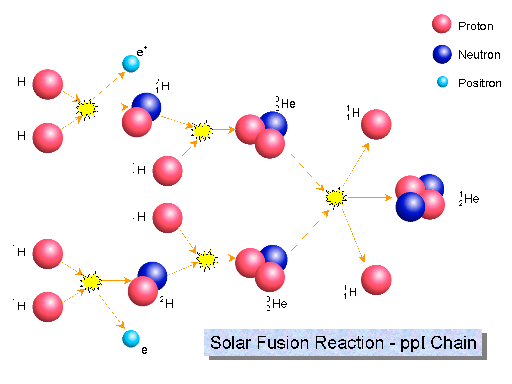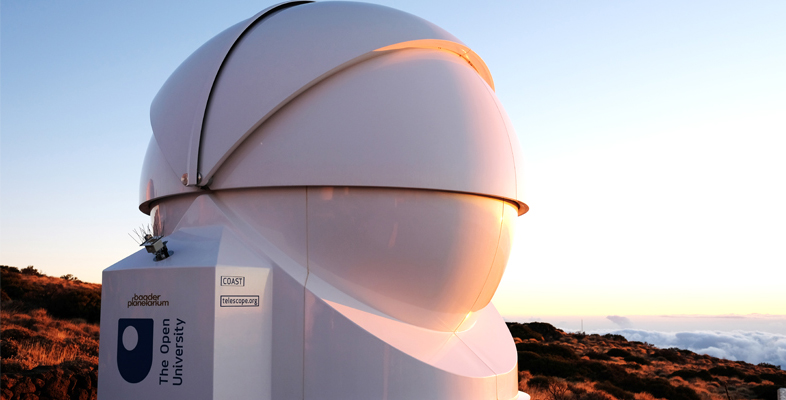3.2 Nuclear fusion – the source of the Sun’s energy
Current nuclear power stations run on uranium or plutonium as nuclear fuel, but as you have seen the Sun is made up of mostly hydrogen and helium, so the Sun runs on a different type of nuclear reaction.
The type of nuclear reaction taking place in the core of the Sun is known as nuclear fusion and involves hydrogen nuclei combining together to form helium. In the process, a small amount of mass (just under one per cent) is released as energy, and this makes its way to the Sun’s surface before beaming out into space. The outward pressure of all this energy flowing out from the core to the surface helps to support the Sun against the force of gravity, preventing collapse and keeping it stable over a long period of time.

Full resolution image available here [Tip: hold Ctrl and click a link to open it in a new tab. (Hide tip)]
Figure 7 illustrates the nuclear fusion process taking place in the core of the Sun. The nucleus of a hydrogen atom consists of a single proton; the helium nucleus is made up of two protons and two neutrons. The process takes place in several stages with nuclei combining at each stage to form larger nuclei. The overall result of this chain is that four protons are combined to form one helium nucleus. During this chain, two of the protons turn into neutrons so that the final helium nucleus contains two protons and two neutrons.
Because the protons each have a positive electric charge they would normally repel each other. Tremendous temperatures and pressures are required to force the protons close enough together for the fusion process to take place so these reactions can only occur in the core of the Sun where the temperature reaches up to 15 million degrees, and not in the outer layers.
Crucially, the mass of the helium nucleus produced in this chain of reactions is ever so slightly lower than the mass of the four protons that we started with. The difference is only slight – less than one per cent of the mass – but this releases a significant amount of energy. Untold billions of these reactions convert over 4 million tonnes of matter to energy every second, producing the overall energy output of the Sun.
